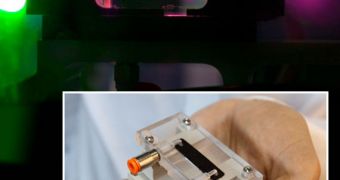Physicists with the US Department of Energy's (DOE) Lawrence Berkeley National Laboratory (Berkeley Lab) say that they are currently working on validating laser plasma accelerator technologies.
If successful, their efforts could lead to the establishment of a new class of scientific devices, which could replace large -scale particle accelerators and colliders for a wide range of scientific applications.
Such instruments exist for a very specific purpose, which is to create light of various energies and wavelengths. Traditionally, these so-called light sources are large-scale equipment installed on particle accelerators, but lately experts have been shrinking them down to size.
At this point, advanced light sources fit on a tabletop, and the Berkeley Lab team is heavily involved in demonstrating the capabilities these devices have for conducting advanced scientific studies.
One of the main demands physicists have of such instruments is that they should be capable of producing radiation in the entire light spectrum, from microwaves to gamma rays. This is what allows scientists to conduct fundamental physics research using tabletop light sources.
There are several classes of such devices being researched simultaneously, but the Berkeley Lab group focused on laser plasma accelerators. Their LOASIS program demonstrated high-quality electrons beams of billion-electronvolt energy levels, over a distance of 3.3 centimeters.
Under the ongoing BELLA project, experts want to achieve a beam performance of 10 billion electronvolts over a single meter. In a new paper published in the top scientific journal Nature Physics. The LOASIS team describes a way of tuning electron output to produce a variety of wavelengths.
“To describe how a laser plasma accelerator works, I use the analogy of a surfer riding a wave. The surfers are the electrons themselves. The waves form when a laser pulse plows through a plasma,” says Berkeley Lab expert Wim Leemans.
The officials holds an appointment as the head of the LOASIS program, at the Berkeley Lab Accelerator and Fusion Research Division. The new study is “a major step toward perfecting the laser plasma light sources and accelerators of the future,” he explains.
What the team did was develop a new way of allowing electrons to catch the “waves” they were supposed to read. In-depth details of how the method functions can be viewed in this Berkeley Lab press release explaining the procedure.

 14 DAY TRIAL //
14 DAY TRIAL //